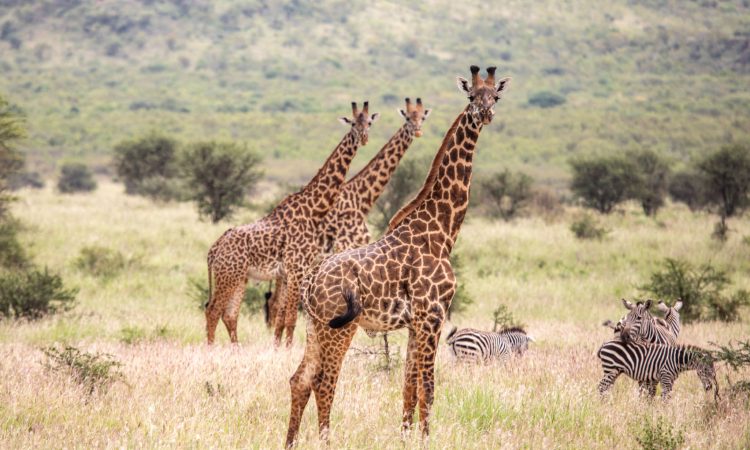Exciting moment in Ibanda Kyerwa national park : The unknown park is a hidden gem in the country’s western region, a scenic paradise with undulating hills, valleys, plains of acacia savannah, and a central basin divided by seasonal rivers that fill the park’s scattered lakes and swamps. The park has a 200 km2 size. The Park is extraordinarily blessed with a range of features, including grasslands, lakes, rivers, and wetlands home to several species of wildlife.

After first being established as a Game Reserve in 1972, the Park was gazetted in July 2019. It covers 200 km2. There are two wet seasons, from September to December and March to May, and the average elevation above sea level is 1,288 meters. The Akagera River flows around over half of the National Park, and there are other permanent springs, so even though it is dry from June to early October, wildlife is still widely dispersed. The green season lasts from October to May, however due to the vast amounts of medium-grass savannah, most of the Park is still accessible at this time, and wildlife viewing is excellent.
The park is situated in the northwest of Tanzania, where it shares a narrow border with Akagera National Park and borders Rwanda to the west.
The Kagera River serves as the park’s physical border. The Kagera River, once more, serves as the park’s actual northern boundary with Uganda. One of Tanzania’s main rivers that serves as a border with Rwanda is this one. Ibanda-kyerwa National Park in Tanzania and Akagera National Park in Rwanda are divided by the same river that divides the two countries. The rivers form a border with Uganda to the north as well, making it simple for travelers from Rwanda and Uganda to travel there.
Open Acacia savannahs, some of which have medium grass, are typical of this isolated and stunning region of Tanzania while on Explore Tanzania Tours. To the west and south, a line of rolling hills and valleys surround a central basin with low hills and plains that are divided by seasonal rivers and have sporadic lakes and swamps.

Topi, eland, impala, waterbuck, reedbuck, and bushbuck are just a few examples of the abundant plains game. Large herds of the imposing and dramatic antelope known as roan can be found.
Buffalo herds are another frequent sight. Because there aren’t any lions in Ibanda right now, the major big predators are the leopard and hyena. In the Kagera River, as well as some of the lakes and wetlands, hippos and crocodiles abound.
On the Tanzanian side of the Kagera River, grassy banks slope down to dense vegetation with palm trees and forest trees. There are spots with lovely overlooks of the river where one may unwind with a picnic or stop for tea during a wildlife drive.
The primary pursuits include game viewing via vehicle, park ranger-led walking safaris, bird watching, picnicking, and camping.
A game drive inside the park is inspiring to many people because they can observe creatures including herds of buffalo, zebra, leopards, topi, eland, impala, waterbuck, reedbuck, and giraffe. The park also has broad savannah grasslands, scattered lakes, hills, valleys, the Kagera River, and basins. Also walking safari in Ibanda national park provides exceptional recreational possibilities and a connection to nature.
At National Park locations, camping can be arranged through the park administration, and basic lodging is available in Murongo, the town that is the closest to the park and is located about 3 12 kilometers away. The closest town, Murongo, which is about 3 12 kilometers from the park boundary, offers basic lodging. The Park has a number of roadways that are utilized for game-watching and ranger patrols.
Millions of animals, birds, and plants make up the African savanna, and safaris there promise endless sightseeing. You travel the countryside in quest of the “Big Five” (elephants, lions, rhinos, Cape buffalo, and leopards). You can expect to see Blue Wildebeests, Zebras, a wide range of antelope species, Gazelles, Giraffes, Baboons, and Hippos on any given day. The birdlife is amazing; up to 400 different bird species have been identified in some regions! Consider the magnificent Baobab tree (some tribes assert that the tree was in fact planted upside-down), or any of the numerous thorn tree species. Additionally, you’ll see the boundless plains, towering mountains, and the most breathtaking sunrises and sunsets you’ve ever seen! Imagine a brief but intense thunderstorm in the late afternoon followed by a stunning rainbow. Our Professional Safari Guides have the experience to lead our guests through the bush and are well-trained in wild animal behavior. To provide the best possible visibility of a game, our vehicles are 4 by 4 Toyota Land Cruiser and Land Rovers with hutched roofs.
The park can be reached through air and also road. Through Air, Light aircraft can fly to Ithanda Village or an airstrip inside the Park from airports at Chato and Bukoba. By Road,it is 220km from Murongo to Bukoba: between Chato and Murongo (327 km). And it is about 3 12 km from Murongo to the Park. From the Ibanda airport to Murongo it is 110 km. however the Road access from Uganda is feasible via Murongo.


